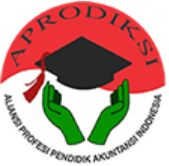ANALISIS RASIO KEUANGAN SEBAGAI ALAT PENGUKUR KINERJA KOPERASI MAHASISWA UNIVERSITAS NEGERI YOGYAKARTA
DOI:
https://doi.org/10.21831/jpai.v5i2.1778Abstract
This research had a purpose to get the information about the performance of KOPMA State University of Yogyakarta from the perspective of : level of liquidity from both every division and general, level of solvability from both every dividion and general, and level of rentability from both every division and general.
This research was a descriptive research by analizing the data from year 2001 to year 2005 which consist of (1) current ratio, (2) asset turn over, (3) total assets to total debt ration, (4) equity to debt ratio, (5) renability, (6) return on assets and (7) profitability.
The result showed that the division of mini market got a loss Rp44.786.312,00 in 2004 and Rp 54.951.190 in 2005. The division of cafe 1 got a loss Rp3.305.297 in 2005. The division of photocopy got a loss Rp20.674.916 in 2005. The ratio analysis showed that : (1) current ratio : 184,48 %, 152,3 %, 189,12 %, 179,83 % and 150,85 % with the average 171,32 % showed that the liquidity was below the criteria (175 %). (2) Asset turn over : 7.1 x, 6.2 x, 4.3 x and 4.6 x with the average 5,66 x showed that the condition was above the criteria. (3) total assets to total debt : 201.03 %, 181.64%, 237,45%, 214.77% , and 166.25% with the average
Downloads
How to Cite
Issue
Section
License
Authors who publish with Jurnal Pendidikan Akuntansi Indonesia journal agree to the following terms:
- Authors retain copyright and grant the Jurnal Pendidikan Akuntansi Indonesia journal right of first publication with the work simultaneously licensed under Creative Commons Attribution License (CC BY 4.0) that allows others to share the work with an acknowledgment of the work's authorship and initial publication in this journal.
- Authors can enter into separate, additional contractual arrangements for the non-exclusive distribution of the published version of the work (e.g., post it to an institutional repository or edit it in a book), with an acknowledgment of its initial publication in this journal.
- Authors are permitted and encouraged to post their work online (e.g., in institutional repositories or on their website) before and during the submission process, as it can lead to productive exchanges, as well as earlier and greater citation of published work.









